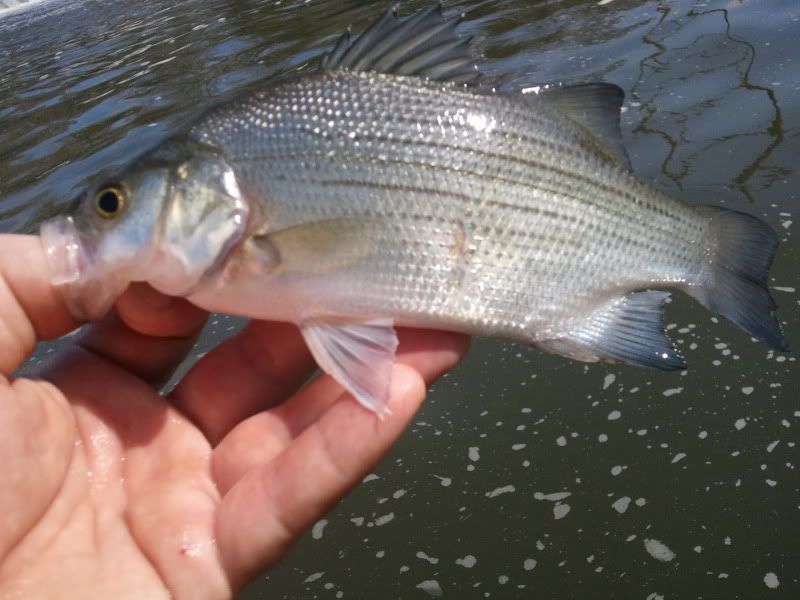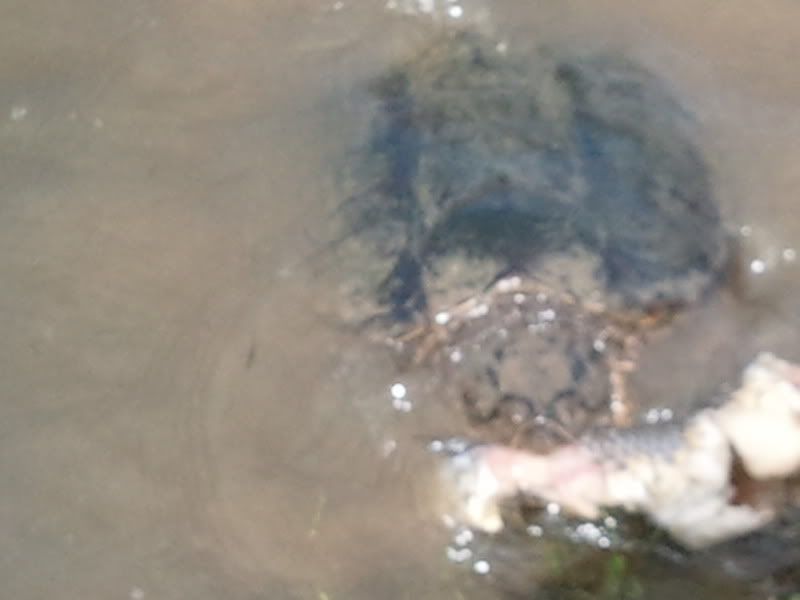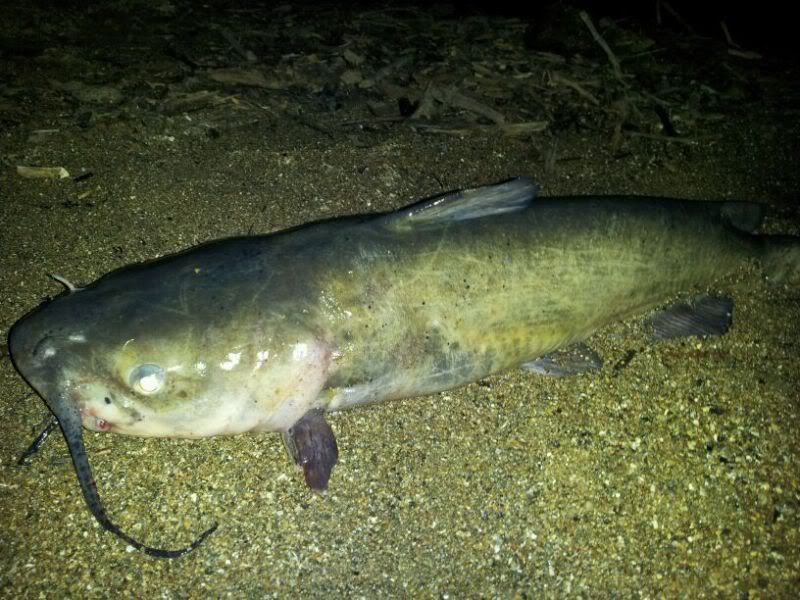White sucker
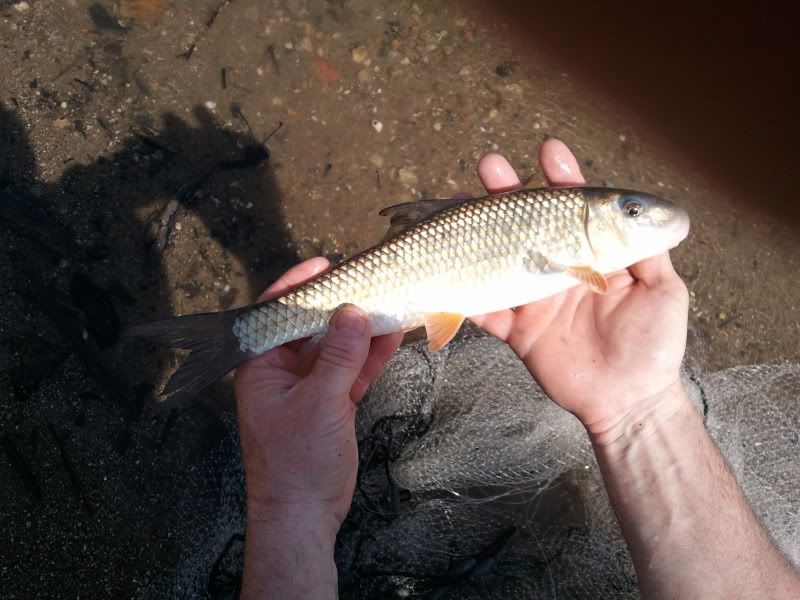
Please id. I get a lot of these and just call them river minnows.

My first attempt sampling and this floats up to me dead. Turtle must have taken a swipe.
Highfin?
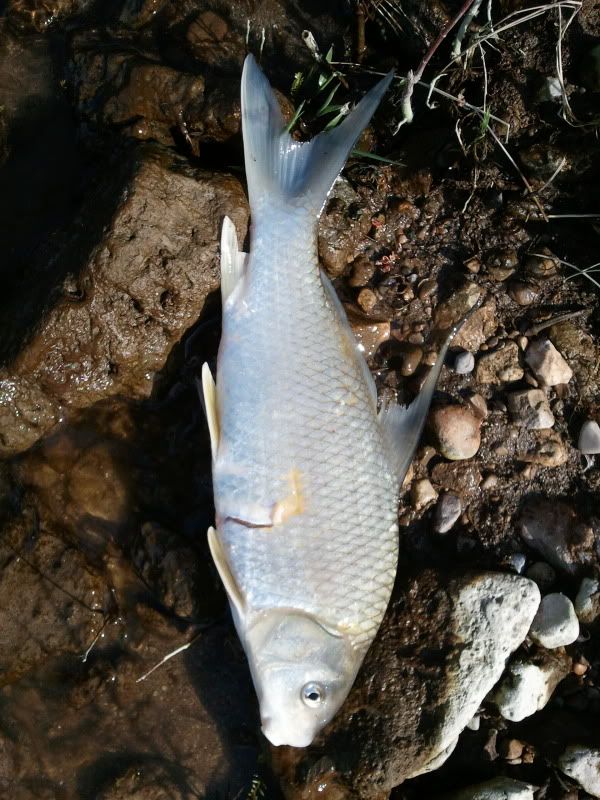
All of these fish were released. Sorry for the bad pics. It's tough with wader, pole and by yourself on the caught. I did have some help on the netted fish. Please feel free to comment or correct id.
Hello Jdan, welcome to the site.
I think many of us here got introduced to non-game fishes as a by-catch when angling. Then when we begin to learn that there is an incredible variety of fishes swimming among the game fishes, we spend time trying to get to know more about them.
To chime in on some of the comments about the identification of some of the fish you collected....
The fish on top is a golden redhorse (
Moxostoma erythrurum). If you're concerned about water quality, the presence of golden redhorse is usually an indicator of quality fish habitat. These fish are typically absent when the substrate becomes silted, as they feed on macroinvertebrates (mostly insect larvae) that require clean substrate. Also, they are long-lived fishes. Therefore, they respond to pollutants over a longer period of time than other fish species. That particular specimen looks to be in good health. As mentioned in a previous post, the three redhorse species that look most similar in your watershed are the silver redhorse (
Moxostoma anisurum), black redhorse (
Moxostoma duquesnei), and golden redhorse (
Moxostoma erythrurum). I feel that silver redhorse are easy to distinguish from the other two species for a few reasons.
- Adult silver redhorse typically are tallest (i.e., tallest point of the fish when looking at it laterally) right before the origin of the dorsal fin. I feel that this species almost has a triangular body shape. You'll have to use your imagination a bit on that one, admittedly. But here's a pic to illustrate:
http://gallery.nanfa...-17-07.jpg.html - Silver redhorse have a higher number of dorsal fin rays (typically 15-16) than either black or golden redhorse (typically 12-13). Here's a pic showing the dorsal fin of a silver redhorse (you should count 15 rays):
http://gallery.nanfa...-17-07.jpg.html - In addition to those two distinguishing features, the silver redhorse has a deeply clefted/slanted bottom lip (hence why another member suggested that when taking photos for ID'ing redhorse, make sure to get a pic of the lips). The lips of this species look like a deep V. Here's a picture of silver redhorse lips to better illustrate my point:
http://gallery.nanfa...-17-07.jpg.html
The other two species (black redhorse and golden redhorse) can be a bit of a pain to tease apart. Here's some ID tips that may help you in the future with these two species.
- I've always felt that black redhorse have a more "streamlined" appearance than golden redhorse. By this I mean, black redhorse have a longer body shape than a golden redhorse. This would appear to be an adaptation to their preferred habitat, as black redhorse are typically associated with parts of streams with faster flow and cleaner substrates than what is preferred by the golden redhorse. Here's a picture of an adult black redhorse that show the typical streamlined body shape: http://gallery.nanfa...-28-07.JPG.html
The golden redhorse does not appear as streamlined:
http://gallery.nanfa...-09-07.jpg.html
Now, of course, the line between "streamlined" and "not as streamlined" is blurred and only useful when you've seen a large number of both species. However, because the black redhorse has a longer body shape than the golden redhorse, the black redhorse has a higher number of scales along its lateral line. If you count the scales along the lateral line of a black redhorse, you'll arrive at a 44 scales or higher (usually 44-46). If you count the scales along the lateral line of a golden redhorse, you'll get a number between 40 and 42. The black redhorse has the longer body, therefore more scales. In fact, that's the characteristic that I used to ID your redhorse as a golden redhorse (it has ~41 lateral line scales). - A look at the mouth/lips of these two species also helps in identification. When closed/relaxed, the bottom lip of a black redhorse forms a nearly straight line:
http://gallery.nanfa...11_ NT.jpg.html
Whereas the closed/relaxed mouth of a golden redhorse is slightly indented/curved:
http://gallery.nanfa...11_ NT.jpg.html
I was lucky enough to catch both species side by side in Big Rock Creek in northern Illinois to really get good comparisons of the lips. This is another example of why its necessary to take pics of both the mouth and the side of redhorse to obtain proper ID. (Please don't take that point as a lecture, I'm just trying to help  )
)
I was supposed to leave for work 15 minutes ago, so I'll just mention that the second fish is a silver shiner (
Notropis photogenis) and the third is a quillback (
Capriodes cyprinus).



